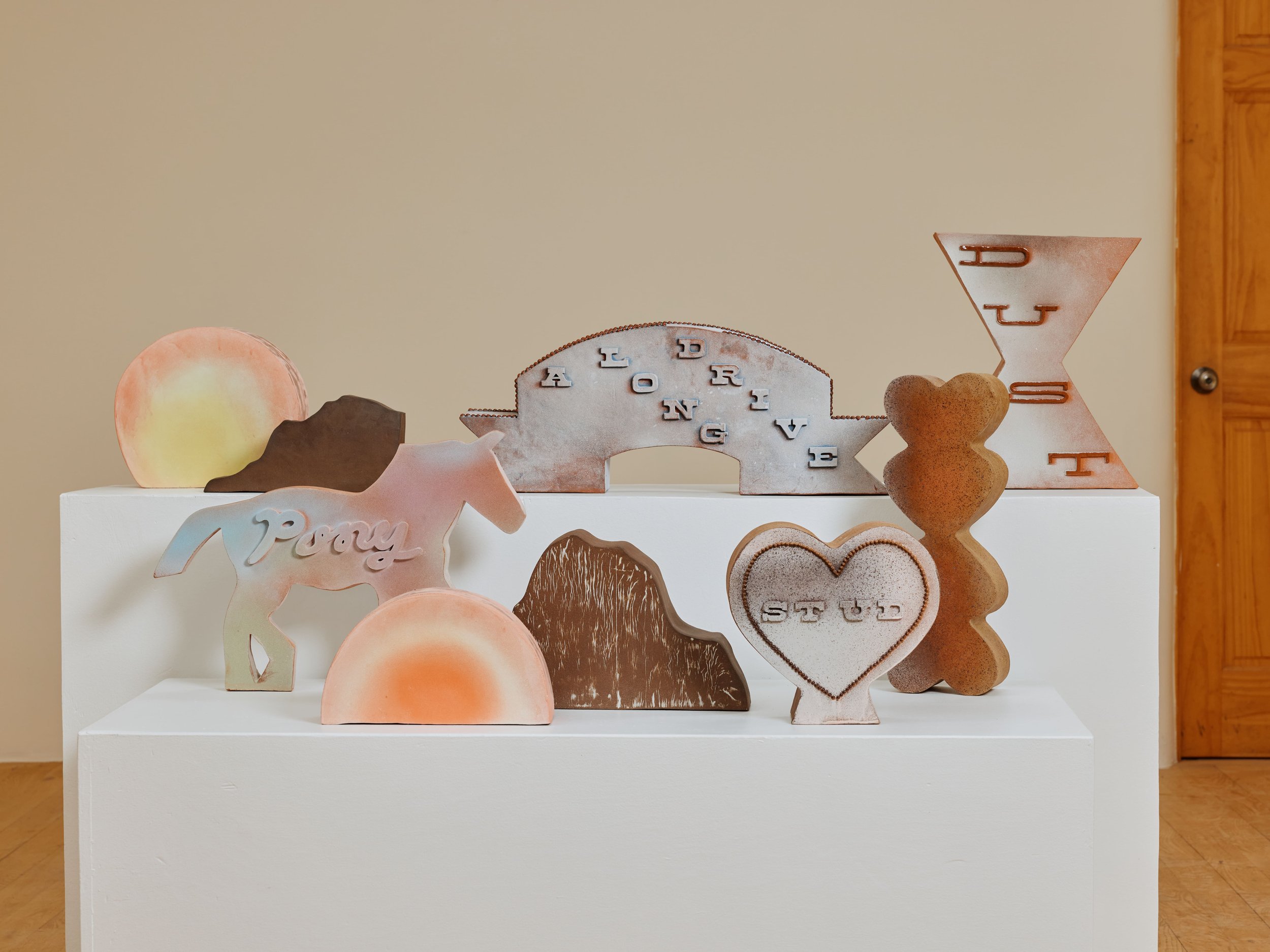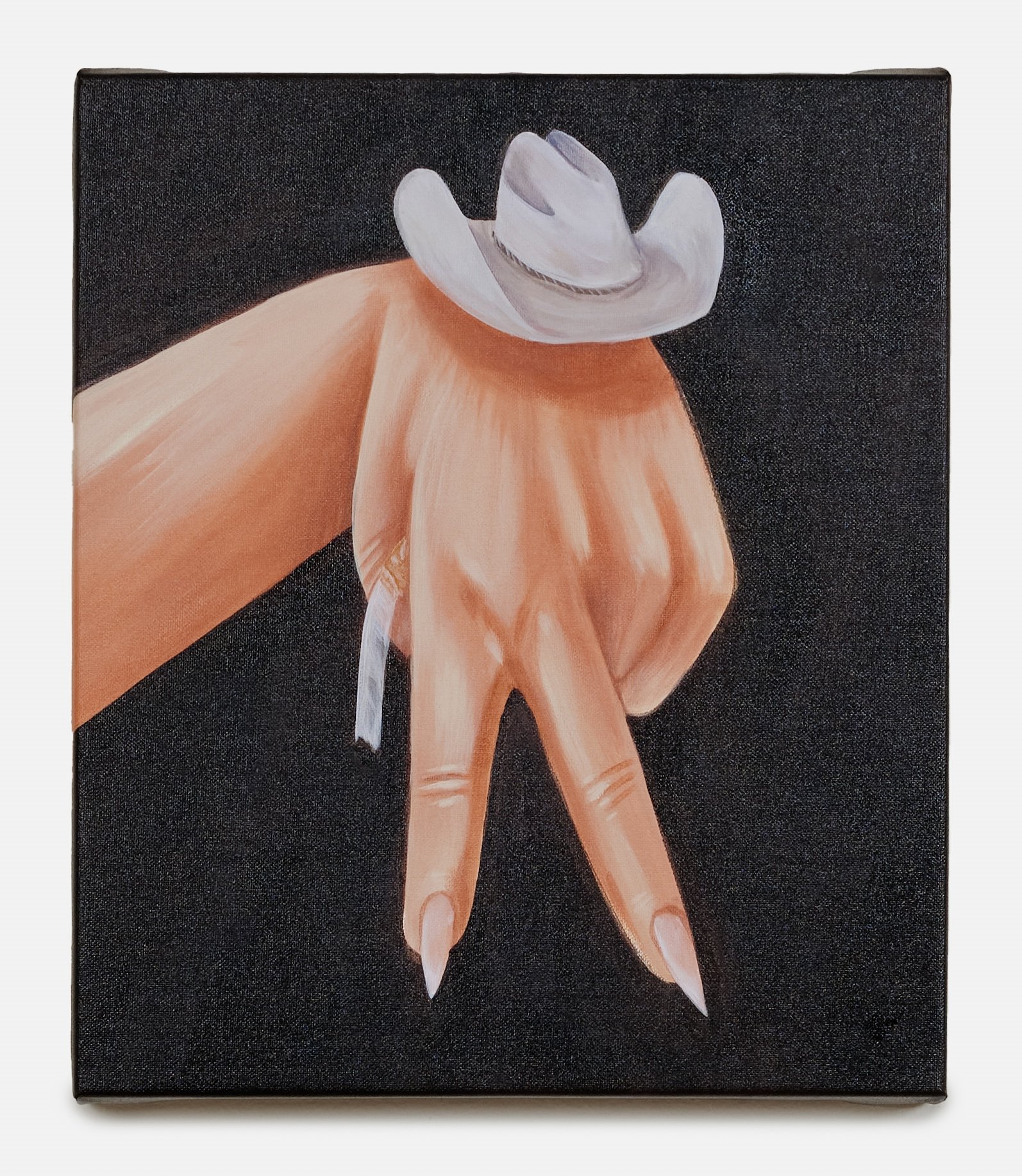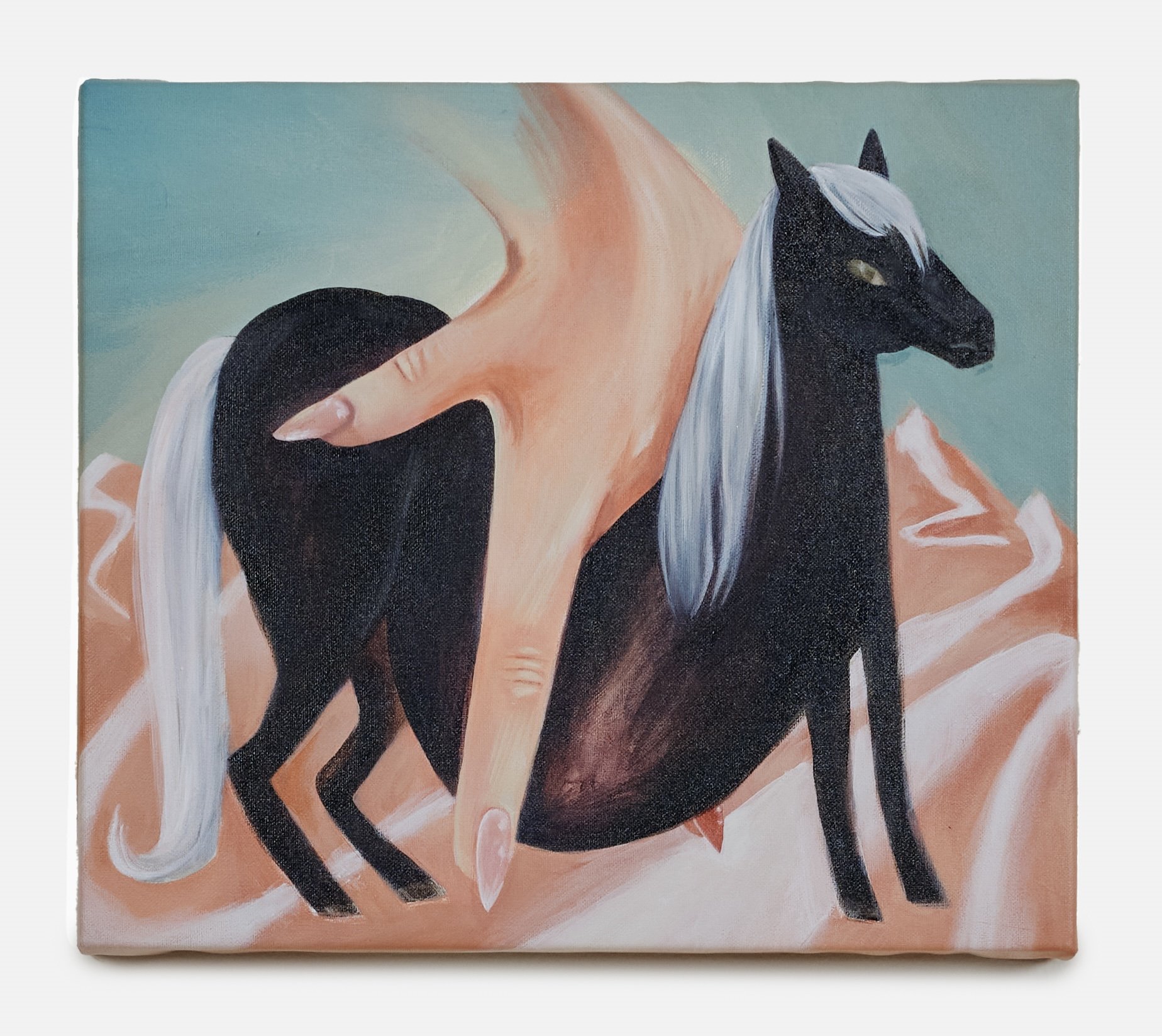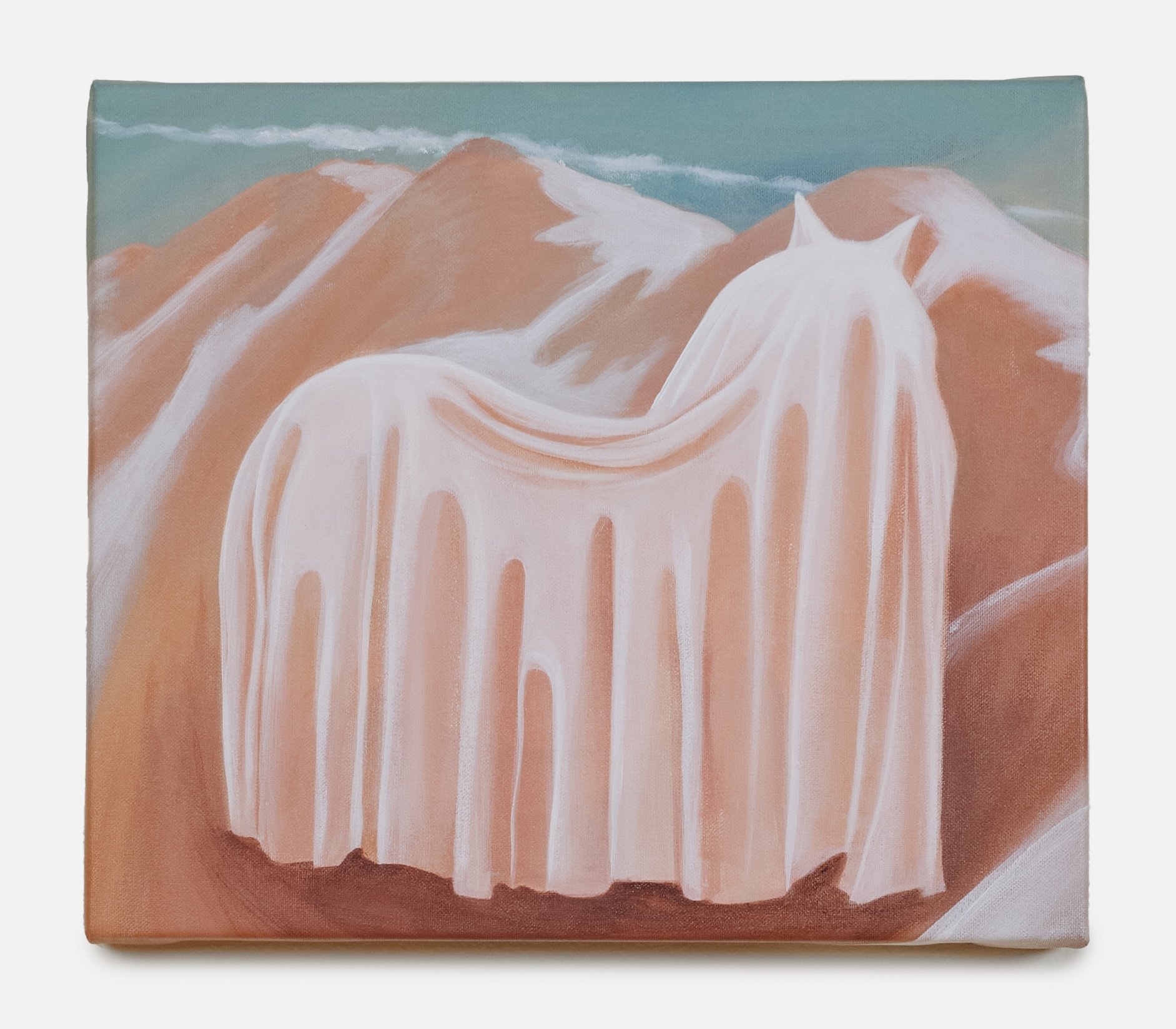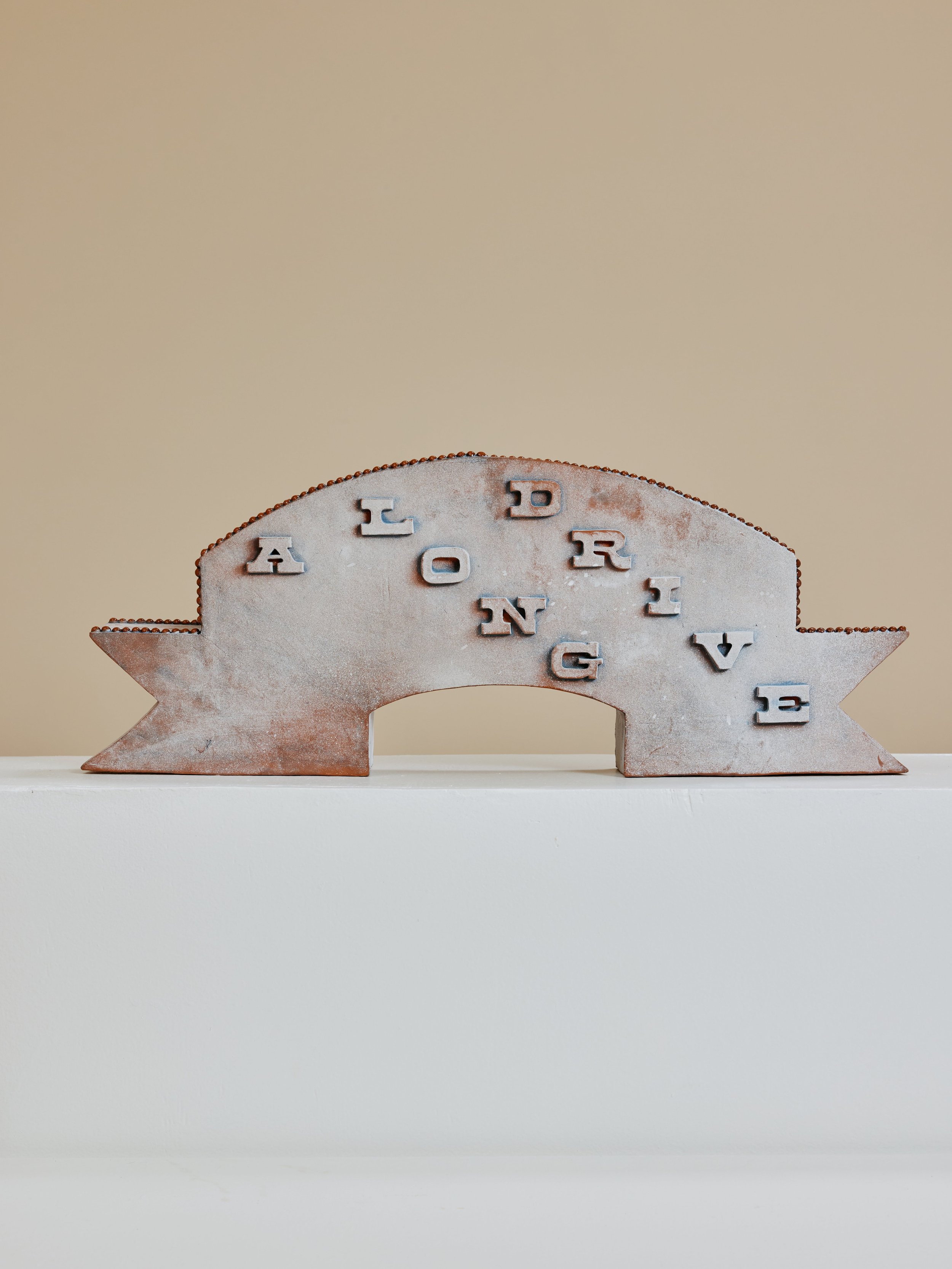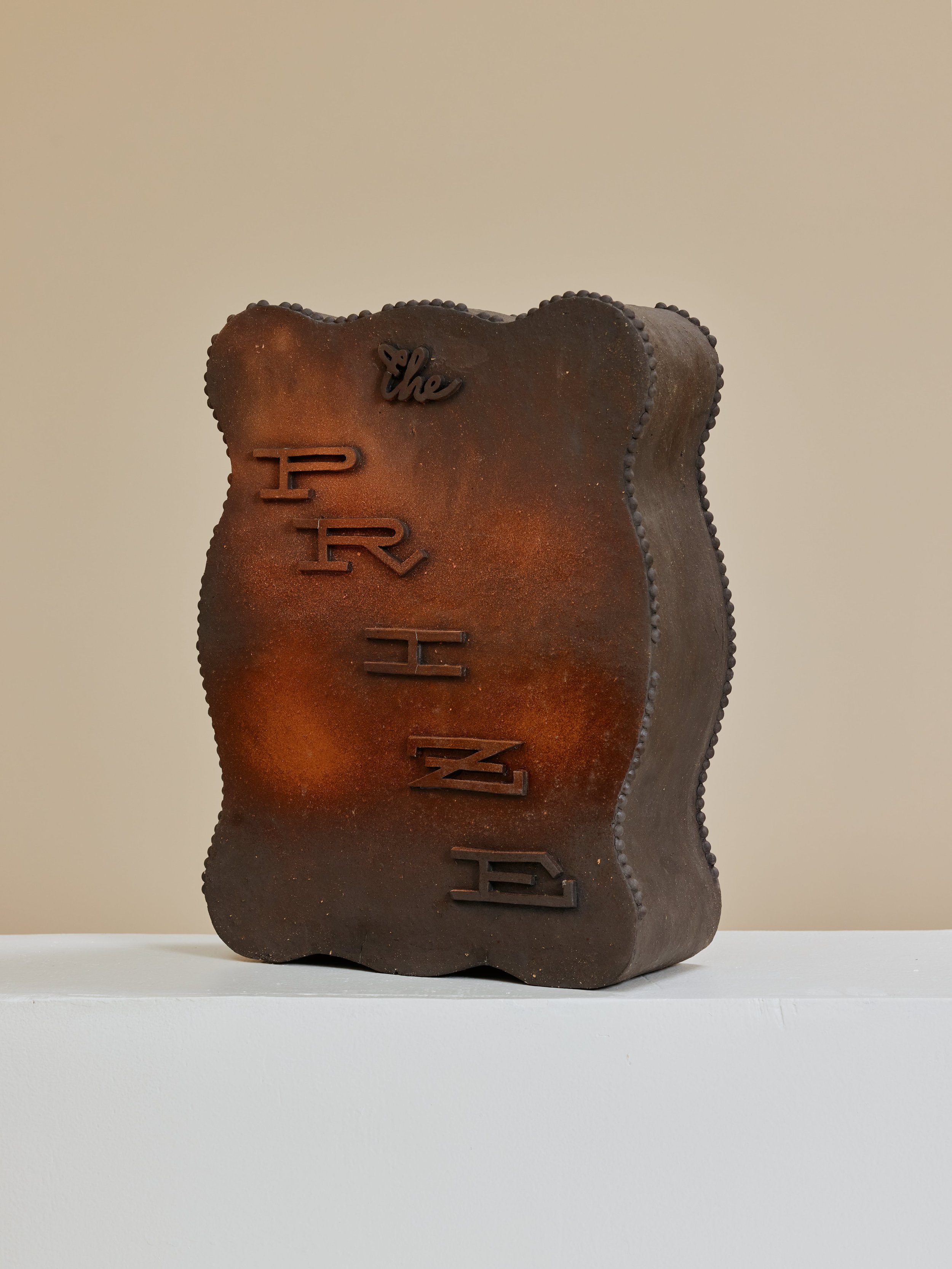Eleanor Foy & Grace Kennison
Trick Pony
March 25 – May 6, 2023
Trick Pony is a two-person exhibition featuring new ceramic sculpture by Eleanor Foy and paintings by Grace Kennison. Both artists are engaged with examining the complex histories that have shaped the American West, and the iconography brought about by their portrayal in media which continue to influence the collective imagination. Employing the visual languages of Western films, tourism, kitsch and mass produced objects, Foy and Kennison seek to analyze and critique the power dynamics established through settler colonialism between people, animals, and land in the West.
Westerns have been at the core of American filmmaking from the beginning of the medium in the late nineteenth century. They experienced a revival in the late 1930s, which ushered in a golden age for Westerns that lasted into the 1970s. In the 1950s, more Western movies were produced than all other genres combined. An intrinsic part of American visual culture, these films contained anachronistic portrayals of the American West which embodied and perpetuated the violence of settler colonialism. Despite this, these films and the ephemera they inspired remain a meaningful part of the collective identity and culture of Americana even to the present day. Utilizing the iconography developed by Western films as source material, the works in this exhibition together conceive of “the West” as a psychological space where ideas about freedom, identity, and ownership function to romanticize, eliminate, or warp our perception of historical events. Taking the position that “the West” is inherently a fantasy, Foy and Kennison approach their depictions of the staffage of this imagined space with both reverence and scrutiny. Iconic landscapes like redrock deserts and mountain ranges, and iconic figures such as the horse and Cowboy receive a treatment that is equal parts revelatory and skeptical- asking, “What about this do we still identify with and long for?”
Eleanor Foy’s works come out of a desire to understand how we place emotion and memory into objects. Born in Houston, Texas and raised in the south San Francisco Bay Area, she has long been a collector of Western ephemera- from mass-produced ceramic objects, to postcards, to photographs taken on road trips. This collecting practice led to a desire to unpack her own infatuation with Western imagery and understand the implications of the objects we surround ourselves with. The ceramic monoliths she presents in Trick Pony are an exploration of icon and language. Made of several different clay bodies, and applied with various layers of airbrushed glazes, these works reference land formations, tombstones, motel signs, and other forms of roadside attractions and advertising. While several works are imposed with vernacular words and phrases that evoke ambiguous narratives, others stand in as set pieces that fill out an imagined landscape. Removed from its original context, the found language Foy emblazons on her sculptures call us to reflect on the associations we have with landscape and the mythology of the West. “Dust” and “A Long Drive/A Touching Sight” send us digging through our memories for the reference. A billboard? The title of a long forgotten Western romance novel? Bookended between forms that recall sunsets and mountains, works like “Dog/Pony” and “Rode Hard/Put Away Wet” seek to complicate another of the beloved figures of Western film and art- the horse. Bringing to mind familiar aphorisms, Foy asks us to consider how horses contribute to our visions of the Western landscape.
Grace Kennison also makes the horse a subject for reinterpretation in the body of work she presents in Trick Pony. Her paintings reconfigure the Western hero’s horse into a “dream horse”, influenced by a quote from The Lone Ranger cited in Jane Tompkins’ West of Everything: The Inner Life of Westerns. In her writing, Tompkins points out that while horses are one of the central and requisite ingredients of a Western film, they are given very little agency. Standing in as a colonized subject meant to represent desire for connection to land, horses are portrayed as loyal and helpless companions to the sadomasochistic, impulsive, and cruel Cowboys we seem to still be obsessed with. In the second episode of The Lone Ranger, the eponymous character calls his newly acquired horse, Silver, a “dream horse, if I’ve ever seen one.” Of this quote, Thompkins reflects: “Like a dream house, a dream horse provides a setting for a hero, an appropriate complement to his appearance.” The projection of the Cowboy’s identity onto his horse is thus an extension of his desire to painfully manipulate animal companions while also casting them as the repository for dreams of companionship, ability, and freedom. Kennison’s horses twist, contort, shapeshift and play dress-up. They stand alone in desolate twilight landscapes. Maybe they only exist in the unconscious mind. A lifelong resident of Colorado, Kennison made this body of work during her first three months living in the mountain town of Ridgway, which is known for being the location of filming for an adaptation of True Grit featuring John Wayne. Belying the ubiquity of Western kitsch, these lands belong to the Ute Tribe, and were the beloved summer hunting grounds of the Tabegauch (Uncompahgre) peoples before settler colonial interests and genocide succeeded in turning the area into a silver and gold mining outpost. Kennison paints the mountains tracked out with ski runs, a melancholic reflection on modern day Western tourism as an extension of the settler colonial project.
Kennison’s and Foy’s works in Trick Pony do not concede to the hyper-aestheticization of the region imposed by the Western film, and seek to complicate the duration of this myth. By reimagining the symbols and stories that comprise our shared understanding of the real and imagined American West, both artists acknowledge their connection to these tropes while working to create new narratives and fantasies which resist the romanticization of Western life and lands indulged by our forebears.
Eleanor Foy (b. 1994, Houston, TX) is a multi-disciplinary artist currently based in Athens, Georgia. Raised in the south San Francisco Bay Area, the landscape and mythology of California and the American West continue to inform her work. After studying painting for three years at Pratt Institute in New York, Foy transferred to Kansas City Art Institute to complete her BFA in ceramics. This change in focus was compelled by a desire to work in a medium that spans fine art, craft, and mass-production. Foy has received numerous awards, including the Regina Brown Undergraduate Student Fellowship through the National Council on Education for the Ceramic Arts and the Warren MacKenzie Advancement Award through the Northern Clay Center in Minneapolis, Minnesota. She has exhibited nationally, including at the 2022 NCECA Annual Exhibition, Belonging, at the Crocker Art Museum in Sacramento, California. She is interested in how vernacular language and domestic objects express cultural values, and seeks to unpack the complicated layers of meaning in seemingly mundane images of Americana. Foy is an MFA candidate at the Lamar Dodd School of Art at the University of Georgia in Athens.
Grace Kennison (b. 1995, Fort Collins, CO) is a painter living and working in the San Luis Valley in southwestern Colorado. Born and raised on the front-range of the Colorado Piedmont and a new resident to the western slope, her work explores relationships to land, ourselves, and iconography within the real or imagined American west. After earning her BFA with a concentration in drawing from Colorado State University in 2018, Grace began painting as a way to bring her visions to life. Kennison has exhibited her work nationally, most recently with her second solo, Call It Heaven, at Winston’s Los Angeles and in multiple group shows at Visions West Contemporary in Denver, Colorado and Bozeman, Montana. In 2022, her work was included in Artmaze Magazine’s Anniversary Issue 25 publication. Grace is currently continuing her practice in painting from her studio in Ridgway, Colorado where she is endlessly inspired by the stories of “the West”.



